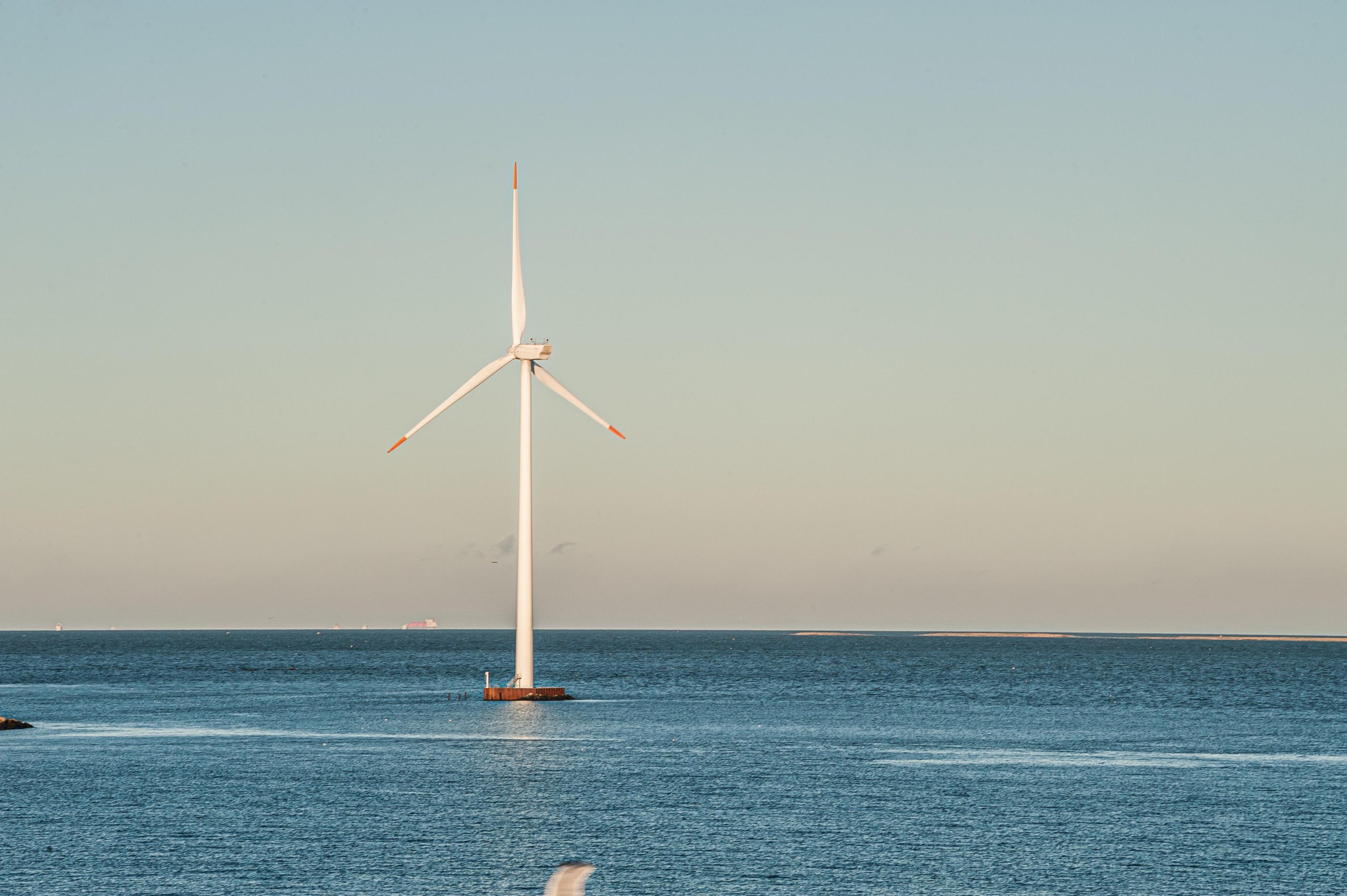
Japan’s missing piece of clean power
Japan needs to unleash its massive untapped wind potential to accelerate its power sector transition.
Table of Contents
Highlights
Executive summary
Unleashing offshore wind
Japan’s opportunity to match the G7 clean power ambitions
The G7 leaders meet next week. Their climate and energy ministers have already laid out goals for offshore wind and solar power. It is Japan’s reluctance to step up on wind–especially offshore wind–that is preventing itself from setting its sights on a decarbonised power sector.
Key takeaways
Japan has the lowest share of clean electricity of any G7 country
In 2022, Japan got 29% of its electricity from clean sources–the lowest of any G7 country–and still 71% from fossil fuels. Japan also has the highest share (33%) of coal generation of any G7 country. In 2022, wind generated 1% of Japan’s electricity; for the rest of the G7, wind power generated 11% of total electricity production. Wind accounted for more than 10% of electricity generation in the United States, and more than 20% in both Germany and the United Kingdom in 2022.
Offshore wind is the biggest gap to unlock a decarbonised power sector
Two authoritative new pathways have been published this year. The Berkeley Lab’s report forecasts Japan to achieve 90% decarbonised electricity by 2035, while the Renewable Energy Institute’s (REI) shows 80% renewables electricity alone by 2035. Offshore wind is the biggest gap between these pathways and Japan’s current electricity plan. Berkeley forecasts it can supply 18% of Japan’s electricity by 2035, but Japan is currently planning for only 5% wind by 2030, for onshore and offshore combined.
Japan’s lagging wind ambition is holding back itself – and the G7
In the most recent communiqué, G7 Climate, Energy and Environment Ministers laid out that they would build 150 GW of new offshore wind by 2030., Although Japan has plans to award contracts to 10 GW prior to 2030, its current plans only expect an operational capacity of 5.7 GW by then. This means, Japan’s operational offshore wind is projected to be just 4% of the collective G7 target by 2030. It is also only a little over 1% of the 392 GW theoretical potential of offshore wind power in the country. Japan is in talks about how much capacity should be contracted by 2040, but there is still uncertainty because it could be as little as 30 GW or as much as 45 GW–and this is also still below the theoretical wind potential.
Chapter 1
Japan’s clean power struggle
Clean power performance has been underwhelming in Japan. 10% of electricity comes from solar, but less than 1% from wind in 2022
As it presides over this year’s G7 leadership, Japan is facing a problem: its peers are going full steam on the electricity transition and want to reflect that in the G7’s outlook, but Japan is lagging and therefore is holding back overall ambition of the G7.
The latest generation data shows Japan’s clean electricity lags in last place, with only 29% of its electricity from clean sources and still 71% from fossil fuels. Japan also has the highest level of coal generation of any G7 country (33% in 2022), for the fourth consecutive year since it overtook Germany in 2019.
Sweden and is equivalent to the total installed solar panel capacity of the United States (113 GW).
China currently produces around eight out of every ten solar panels, and the growth in Chinese exports has global implications for the scale-up of clean power.
As G7 states grow wind, Japan falls behind
Although Japan has made efforts in expanding solar by going from almost zero to 10% of its electricity mix in the last decade, Japan’s wind has not fared as well. In 2022, wind generated less than 1% of Japan’s electricity. For the rest of the G7, wind power has risen to 11% of total electricity production and shown an increasingly more important role than solar, with over twice the electricity coming from wind than solar in 2022.
In 2022, wind accounted for more than 10% of electricity generation in the United States, and more than 20% in both Germany and the United Kingdom. The second lowest wind performer was Canada at 6%. But Japan with just 1% of its electricity from wind is a clear outlier in the G7.
Chapter 2
Wind is Japan’s missing puzzle piece
Unleashing wind potential could boost Japan’s share of clean power to 90% by 2035.
Japan’s current clean power target for 2030 is outlined in its 6th Strategic Energy Plan. According to the plan, Japan aims to reach 59% of its electricity from clean power by 2030, with by far the largest component of that coming from a return to service of closed nuclear plants and a build programme for new nuclear plants.
However, wind is envisaged to produce only 5% of Japan’s electricity in 2030. Despite having a longer coastline than any G7 country except Canada, the plan includes only 5.7 GW of offshore wind capacity. Yet, this figure is only a little over 1% of the roughly 392 GW theoretical potential offshore wind power estimated by Japan’s Ministry of the Environment.
Fresh wind pathways for Japan
This year, two studies have been released that show pathways towards a predominantly decarbonised electricity system by 2035.
These are “The 2035 Japan Report: Plummeting Costs of Solar, Wind, and Batteries Can Accelerate Japan’s Clean and Independent Electricity Future” from the Lawrence Berkeley National Laboratory and “Proposal for the 2035 Energy Mix: Toward Decarbonizing Electricity with Renewable Energy” from the Renewable Energy Institute (REI).
The pathways forecast that clean power growth–led by wind and solar–will allow Japan’s electricity to largely decarbonise by 2035. The Berkeley Lab’s report forecasts Japan to achieve 90% decarbonised electricity by 2035, while the REI shows 80%.
The two studies’ scenarios are advances upon Japan’s 6th Strategic Energy Plan which only expects 59% of electricity decarbonised by 2030. With a solar share target of up to 16%, Japan’s current energy plan’s ambition for wind is only one third that of solar. Despite such massive wind potential that could be unlocked, Japan’s plan has unfortunately continued to leave plenty of room for coal generation in 2030, with a share of 19%.
In the Berkeley Lab study, by 2035 solar generates 27% of Japan’s electricity and wind generates 26%. It is wind that is the biggest gap to Japan’s current electricity plan, and particularly offshore wind, which Berkeley forecasts can supply 18% of Japan’s electricity. In terms of capacity, the Berkeley Lab scenario for 2035 suggests that wind could expand to 66 GW if Japan adds about 5 GW of wind capacity every year.
Similarly, the REI study also suggests leading roles of solar and wind in its 2035 scenario. The difference is that this study shows a more optimistic view on solar, attributing close to 40% of total electricity generation by 2035. That said, the REI scenario still envisions a larger role for wind, which would account for 20% of Japan’s total power production by 2035. Although the share of wind’s expected generation was not broken down between onshore and offshore, the REI study calls for offshore capacity to reach 25.4 GW by 2035. That is far more than the 5.7 GW for 2030 written into the 6th Strategic Energy Plan.
Chapter 3
Japan’s lagging wind ambition is holding back itself – and the G7
Japan should step up on wind–especially offshore wind–to back the G7 ambition for decarbonised power by 2035.
Later this week, the G7 leaders will meet to agree the final wording to their latest text. The most recent communiqué by G7 Climate, Energy and Environment Ministers has already laid out that they would build 150 GW of new offshore wind by 2030.
G7’s offshore wind ambitions compared
Japan’s 6th Strategic Energy Plan plans to build only 5.7 GW of offshore wind by 2030. That’s just 4% of the G7 total, even though Japan had 17% of the electricity fossil generation of the G7 in 2022. Prior to this plan in 2020, 10 GW for 2030 was touted in Japan’s Vision for Offshore Wind Power Industry, but even that would only be 7% of the G7 total.
The United Kingdom has the highest ambition for offshore wind, aiming to achieve 50 GW by 2030 (British Energy Security Strategy, April 2022), while the United States aims to install 30 GW of offshore wind (Biden Administration, March 2021). Germany also aims to install 30 GW of offshore wind power by 2030 (Offshore wind power law, July 2022).
Who is “predominantly decarbonised” in 2035?
G7 leaders agreed last year to “commit to a goal of achieving predominantly decarbonised electricity sectors by 2035”. But of course, the word “predominantly” is highly contested.
For the UK, US, Canada and Germany it means 100%. All four countries have already made commitments to this effect. That leaves France, which is already 90% clean power due to its large nuclear fleet, and Italy, which has committed to phase out coal by 2025, but is yet to publish a plan to replace gas with clean power.
For Japan, the Berkeley Lab study shows that it has the potential to raise its clean power ambitions by unleashing offshore wind–alongside some onshore wind and enhanced solar– which will put Japan on track to reach 90% decarbonised power by 2035.
Supporting materials
Downloads
Download the full report PDF
Acknowledgements
Contributors
Rini Sucahyo, Chelsea Bruce-Lockhart, Ye Yuan, Claire Kaelin, Hannah Broadbent, Matt Ewen
Header image
Offshore wind turbine generating electricity
Credit: Trygve Finkelsen / Alamy Stock Photo
Media coverage
Related Content






